Lonnie Pacelli's Blog, page 50
August 8, 2019
In Search of the Least-Worst Alternative
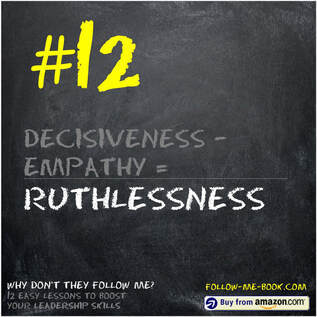 In 1985, The Coca-Cola Company introduced a new formula for its Coca-Cola product, calling it “New Coke.” Consumer reaction to the new formula was negative, and within three months the original formula was revived and rebranded as “Coca-Cola Classic.” The company was faced with a decision-- keep the new formula and try to change consumer perception or abandon the product. The New Coke product was ultimately discontinued in July 2002. As the company navigated their choices, the alternatives were about how to recover from a bad situation, with its management faced with minimizing a profit hit and negative consumer sentiment. Their decision path ultimately worked out well (with some speculating that New Coke was a marketing ploy to stimulate sales), but the decisions along the way were painful choices meant to minimize loss.
In 1985, The Coca-Cola Company introduced a new formula for its Coca-Cola product, calling it “New Coke.” Consumer reaction to the new formula was negative, and within three months the original formula was revived and rebranded as “Coca-Cola Classic.” The company was faced with a decision-- keep the new formula and try to change consumer perception or abandon the product. The New Coke product was ultimately discontinued in July 2002. As the company navigated their choices, the alternatives were about how to recover from a bad situation, with its management faced with minimizing a profit hit and negative consumer sentiment. Their decision path ultimately worked out well (with some speculating that New Coke was a marketing ploy to stimulate sales), but the decisions along the way were painful choices meant to minimize loss. A huge part of a leader’s job is making decisions based on informed alternatives which articulate both the positive and negative consequences of the decision. The typical mode of operation is to look at pros and cons and do a pros to cons weight assessment of which alternative’s pros best outweigh the cons. But what about when there aren’t any pros, yet a decision needs to be made? I’ve seen leader decision-making hobbled because there is no good alternative in the decision set, looking for pros in a sea of cons. There’s no good alternative, so it’s about choosing the least-worst alternative.
The mechanics of least-worst alternative management are really no different than looking for a best alternative. It’s all about the mindset decision makers adopt when embarking on the decision. Being overt about recognizing the chosen decision isn’t about bringing benefit, but about minimizing hemorrhaging. It gives decision makers the freedom to make the best decision without the burden of justifying the lack of pros supporting the alternative.Next time you are faced with choosing between worse and more-worse alternatives, keep the following six factors in mind:Forget about perfection – Perfect alternatives with no downside rarely exist. Don’t put unrealistic standards on decision alternatives that can’t be achieved.Set expectations with decision makers up front – Be deliberate with the decision-makers that the alternatives aren’t optimal and that you’re looking for the least painful course of action. Using the term “least-worst alternative” helps cue decision makers as to the type of decision they’re making.Ensure the right people are involved in the decision making – looking at worst-case alternatives may mean including additional people, i.e. someone from the public relations group in a decision affecting customer perceptions, to provide input. Be clear on whether they only provide information to support decision-makers or are included as decision makers. Articulate worst cases for decision alternatives – For each alternative ask the question, “What’s the worst thing that will happen if we do this?” Make sure the worst case is reasonable and aligns to the organization’s mission and values. Also be on the lookout for unreasonable “the world will end” scenarios from pessimistic decision makers.
Assign a singular accountability owner for the chosen alternative – Alternatives that have fuzzy or undefined ownership most likely won’t get done. Ensure there is a singular named owner of the alternative with clear articulation of what needs to be done and when it needs to be done by.Define a follow up rhythm – Define how and when the accountable owner will update decision makers on chosen alternative progress and what the course of action will be in the event the chosen alternative is not working. Also be clear as to whether updates will be via meeting or email.
Navigating through bad alternatives isn’t fun, but having the ability to skillfully and objectively get to a least-worst alternative is a crucial skill the best leaders possess. Keep top of mind whether you’re making a maximize-benefit or least-worst decision and ensure your decision makers understand the type of decision they’re making.
Published on August 08, 2019 02:53
August 3, 2019
"I Can’t Keep Up!" Six Principles for Using Your Calendar to Get More Done
 Through my years I’ve seen many leaders at all levels struggle with getting things done either by having to work late in the evenings and on weekends or by completely missing due dates. As I’ve talked with these leaders, they just consider it part of the job, unable or unwilling to do anything about it. I found myself early in my career doing the exact same thing; setting unrealistic expectations and killing myself to try to meet them, only to have a limited success rate of delivering on time. I hated that hamster wheel.
Through my years I’ve seen many leaders at all levels struggle with getting things done either by having to work late in the evenings and on weekends or by completely missing due dates. As I’ve talked with these leaders, they just consider it part of the job, unable or unwilling to do anything about it. I found myself early in my career doing the exact same thing; setting unrealistic expectations and killing myself to try to meet them, only to have a limited success rate of delivering on time. I hated that hamster wheel.The good news is you don’t have to accept this as the status quo. Here are six simple principles to get better control of your work and be more deliberate about what you get done:1. Make your to-do list a “done” list – It’s commonplace to keep a to-do list. My approach is to apply four changes to the prototypical to-do list:Express what needs to get done in terms of the final deliverable, not the action to produce it - For example, instead of saying, “Research hotels in Venice,” say, “Decide and book hotel in Venice.” The wording focuses on a definitive end to the activity, versus something which has no defined end.Add a date the to-do needs to be done - By adding the due date, you by default prioritize when something needs to be done, which is the same as prioritizing the list.Add an urgent/not-urgent indicator - By adding the urgent/not-urgent indicator, you are forced to think about not only those things which need to be addressed right away, but also those which are important but not required immediately.Subdivide dones into deliverables that can be completed within a normal work week – For bigger deliverables that may take longer than a week to produce, break the deliverable down into smaller deliverables that can reasonably be completed in a week. For example, if you have a done called “produce competitor report,” break the deliverable into smaller deliverables that align with the report’s table of contents, i.e. “Create strengths and weaknesses analysis for each competitor.”
2. Ensure your calendar includes everything that consumes time in your day, not just meetings – I’ve seen countless examples of people only putting meetings with others in their calendars, making their days crammed with meetings, then burning the midnight oil to get non-meeting work done. Any activity that consumes time in your day--meetings, work time, personal time, professional development, or other activities--deserve time scheduled in your calendar.
3. Schedule a recurring Friday afternoon progress and planning meeting with yourself – Near the end of your day on Friday, block out 30 minutes on your calendar to do three things:Review what you committed to get done – For those items you committed to do in the prior week, look at what you actually got done. For those items you either didn’t get done or spent more than your allocated time completing, ask yourself why. Were you too optimistic? Did you let yourself get distracted? Was there legitimate activity that was higher priority? Doing a retrospective analysis on your planned vs. actual done activity will help you be more realistic in future planning.Plan out your calendar for the upcoming week - This is the time to review your “done” list for urgent and non-urgent deliverables needing to be completed and slotting the work time to produce the deliverables into your calendar. It’s important to be realistic with yourself on how much time is needed to complete the deliverables and not set yourself up for failure. Remember to ensure your calendar includes all activity that consumes time in your day.Document what you plan to get done for the following week – For items you are committing to getting done, update your Friday planning meeting for the next week to include the dones, which you’ll review in a week’s time.
4. Make difficult calendar choices – If there just aren’t enough hours in the week to get things done, look to see what needs to change. Perhaps it’s a change in due date or altering or deferring other items in your calendar that are taking up time. Whatever the case, be willing to make some decisions about what you do and who you meet with.
5. Find hidden time in your calendar – Are there meetings you just don’t need to be at? Are there one-hour meetings that can be done in 30 minutes? Can the frequency of recurring meetings be reduced? Can some things be done through offline communication, i.e. email? Ask yourself where time spent in meetings can be reduced or eliminated without materially adverse business impact.
6. Remember that you own your calendar, it doesn’t own you – Certainly things may happen during the week which could alter what you get done (or when you do it). Don’t beat yourself up if it does happen, just look at the frequency and reasons behind the changes. If they’re happening on an exceptional basis because of unforeseen work hitting your plate, then accept it as part of the job. If they’re happening frequently, then it could be you’re either not realistic in your planning or you’re allowing yourself to be distracted. It’s up to you to decide, just be honest with yourself.
A common thread through these principles is discipline. You can put the best-intentioned techniques in place but if you don’t follow them, you’re dooming yourself to emails at midnight. Seriously consider the principles, put your spin on them, and put them into action.
Published on August 03, 2019 02:54
August 2, 2019
Free 8/7-8: The Leadership Greenhouse
 Free 8/7-8: The Leadership Greenhouse
Free 8/7-8: The Leadership GreenhouseGet it at https://amzn.to/2S002Y0
#freebook #teamwork #leadership #kindle #kindlefire #ebooks #ebook #Kindlefreebooks #Kindledeals #FREE #mustread #goodreads #greatreads #freebie #freebies #kindlebook #projectmanagement #leadership #PMI
Published on August 02, 2019 14:20
July 27, 2019
“I’m not on Board!” Embracing Your Team’s Think-Do Cycle
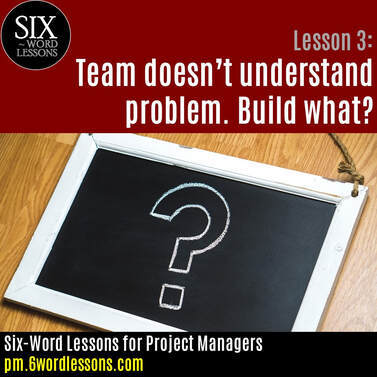 My wife Patty and I purchased a townhome back in 2009. It is in a beautiful area, walking distance to the types of things we like to do. Built in the 1970s, it was badly in need of major renovation. I saw the potential and after one visit was ready to put in an offer. Patty needed to go back a couple more times to look at the townhome, the property grounds, and the neighborhood. She needed more time to think through and absorb what we were considering before moving forward. We made an offer four days after seeing the townhome, when we were both comfortable with the purchase. Then we proceeded with gutting and remodeling, then moved in June 2011. We never regretted the decision.
My wife Patty and I purchased a townhome back in 2009. It is in a beautiful area, walking distance to the types of things we like to do. Built in the 1970s, it was badly in need of major renovation. I saw the potential and after one visit was ready to put in an offer. Patty needed to go back a couple more times to look at the townhome, the property grounds, and the neighborhood. She needed more time to think through and absorb what we were considering before moving forward. We made an offer four days after seeing the townhome, when we were both comfortable with the purchase. Then we proceeded with gutting and remodeling, then moved in June 2011. We never regretted the decision.Our home purchase example was the first time I consciously thought about how quickly I made decisions and moved forward with implementation relative to Patty’s more deliberate approach. At first, I was frustrated with our speed differences, wondering why she couldn’t move as fast as me. As we’ve continued to grow, I’ve learned to respect and appreciate her more thoughtful and deliberate pace as she raises issues that I might not consider. We now recognize each other’s processing speed, or what I call “think-do cycle,” and how our different styles yield a decision-making speed we’re both content with.
The think-do cycle applies to work teams as well. You may have some on your team who are ready to launch on a proposed solution when others need time to process. When differing think-do cycles aren’t acknowledged and embraced, work teams could get frustrated with moving either too fast or too slow. When differences are embraced, decisions and resulting action are made with better team buy-in. As the leader, your job is to balance team-buy-in with the timeliness that a decision must be made. It’s not easy to do; but it’s something that leaders continually need to balance to minimize execution friction. Need better awareness of the think-do cycle and how to implement in your team? Give these five tips a look:
Understand your own think-do cycle speed – Are you someone who typically makes decisions, then immediately embarks on implementation, or do you need more “soak time” to digest the change? Getting real with yourself on your cycle speed will help you better understand the cycle speed of others.
Acknowledge other’s cycle speed – Knowing the think-do cycle speed of team members, stakeholders and others you interact with helps reduce frustration with those whose speed differs from your own. There’s no harm in identifying cycle speeds. Use terms that don’t imply one speed is better than the other, such as “deliberate” or “quick.”Articulate the strengths and weaknesses of each cycle relative to each job function – Someone with a deliberate think-do cycle most likely wouldn’t do well in a position where split-second decisions are needed; conversely, someone with a quick think-do cycle might struggle in a position where consensus-building among a diverse group of stakeholders is required.Keep a balance of both types – The best organizations I’ve seen have a balance of quick and deliberate think-do cycle team members. Teams with a blend of think-do cycles yield a better overall solution than teams made up of people with only one type of cycle.Embrace your counterbalance – You can recognize your and other people’s cycle speeds, but if you don’t embrace the styles different from your own, you’ll just create frustration with your team. Make sure you listen to those with different styles and adjust your own speed when it makes sense.
Be mindful about the think-do cycles of you and your team. You’ll better secure team buy-in on key decisions and reduce execution friction.
Published on July 27, 2019 02:55
July 26, 2019
Free 7/31-8/1: The Lawless One and the End of Time
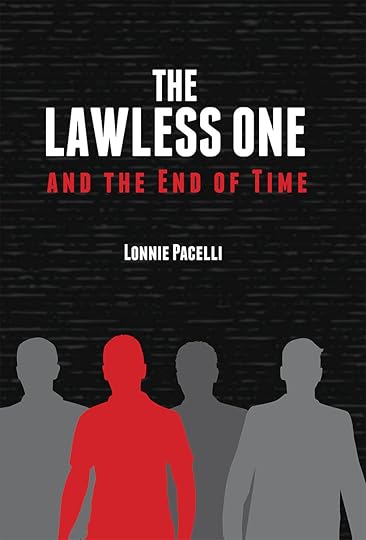 Free 7/31-8/1: The Lawless One and the End of Time
Free 7/31-8/1: The Lawless One and the End of TimeGet it at https://amzn.to/2S3IA50
#kindle #kindlefire #ebooks #ebook #Kindlefreebooks #Kindledeals #FREE #mustread #goodreads #greatreads #freebie #freebies #kindlebook #freebook #jesus #christian #Antichrist
Published on July 26, 2019 10:12
July 20, 2019
Free 7/24-25: Six-Word Lessons to Avoid Project Disaster
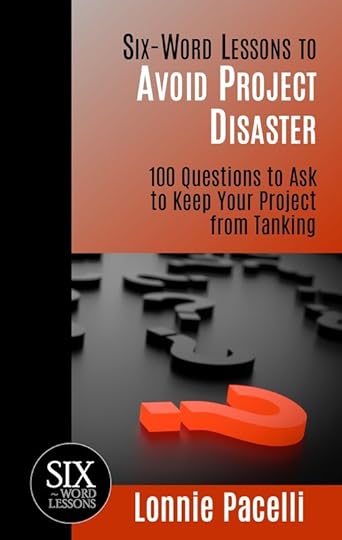 Free 7/24-25: Six-Word Lessons to Avoid Project Disaster
Free 7/24-25: Six-Word Lessons to Avoid Project DisasterGet it at https://amzn.to/2BihYHP
#kindle #kindlefire #ebooks #ebook #Kindlefreebooks #Kindledeals #FREE #mustread #goodreads #greatreads #freebie #freebies #kindlebook #projectmanagement #leadership #PMI
Published on July 20, 2019 02:51
July 15, 2019
Free 7/17-18: Six-Word Lessons for Project Managers
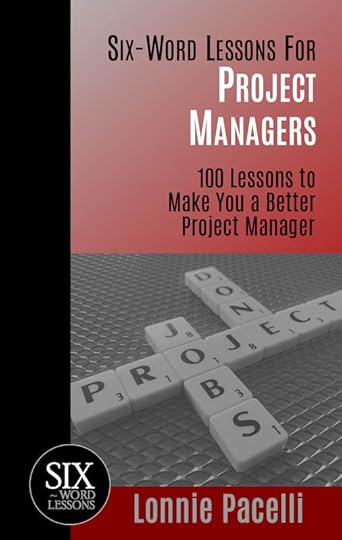 Free 7/17-18: Six-Word Lessons for Project Managers
Free 7/17-18: Six-Word Lessons for Project ManagersGet it at https://amzn.to/2Kibc7U
#kindle #kindlefire #ebooks #ebook #Kindlefreebooks #Kindledeals #FREE #mustread #goodreads #greatreads #freebie #freebies #kindlebook #projectmanagement #leadership #PMI
Published on July 15, 2019 00:00
July 6, 2019
Free 7/10-11: Six-Word Lessons for Dads with Autistic Kids
 Free 7/10-11: Six-Word Lessons for Dads with Autistic Kids
Free 7/10-11: Six-Word Lessons for Dads with Autistic KidsGet it at https://amzn.to/2S5ifne
#freebook #autism #autistic #kindle #kindlefire #ebooks #ebook #Kindlefreebooks #Kindledeals #FREE #mustread #goodreads #greatreads #freebie #freebies #kindlebook
Published on July 06, 2019 02:51
June 30, 2019
Free 7/3-4: Set That Direction!
 Free 7/3-4: Set That Direction!
Free 7/3-4: Set That Direction!Get it at https://amzn.to/2DOTt7M
#freebook #teamwork #leadership #kindle #kindlefire #ebooks #ebook #Kindlefreebooks #Kindledeals #FREE #mustread #goodreads #greatreads #freebie #freebies #kindlebook #strategy
Published on June 30, 2019 02:56
June 22, 2019
Free 6/26-27: Seek First to Understand Your Recipient
 Free 6/26-27: Seek First to Understand Your Recipient
Free 6/26-27: Seek First to Understand Your RecipientGet it at https://amzn.to/2DNcveI
#freebook #teamwork #leadership #kindle #kindlefire #ebooks #ebook #Kindlefreebooks #Kindledeals #FREE #mustread #goodreads #greatreads #freebie #freebies #kindlebook
Published on June 22, 2019 08:19



